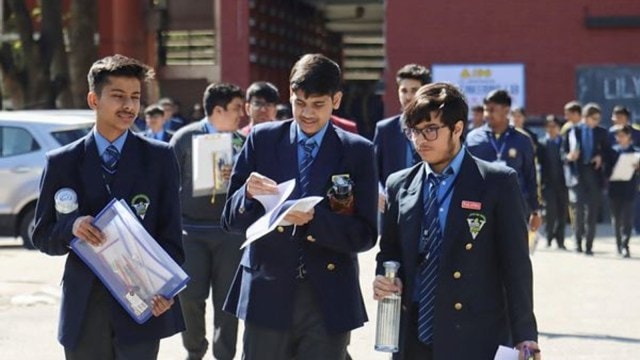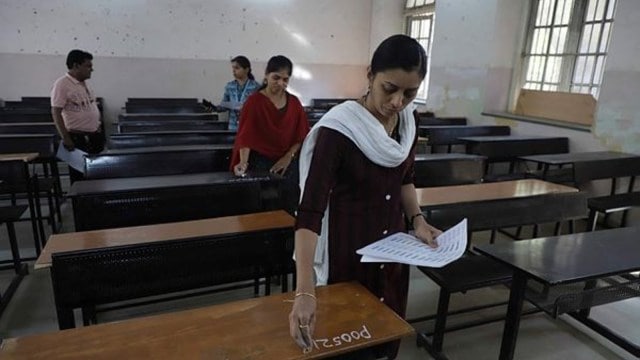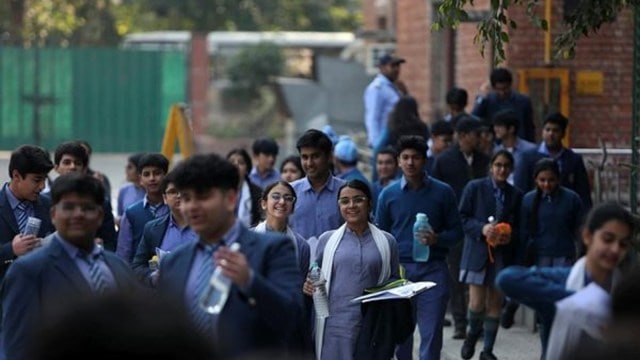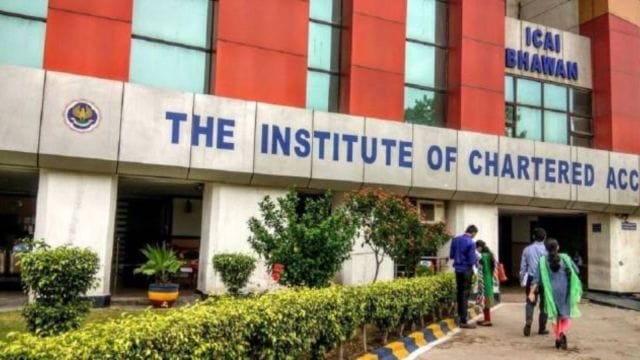
UPSC Issue at a Glance | Air Pollution: 4 Key Questions You Must Know for Prelims and Mains
UPSC Issue at a Glance is an initiative of UPSC Essentials to focus your prelims and mains exam preparation on an issue that has been in the news. Every Thursday, cover a new topic in Q&A format and don’t miss MCQs towards the end of the article. This week’s topic is the Air Pollution. Let’s get started!
If you missed last week’s UPSC Issue at a Glance | Food Inflation from the Indian Express, read it here.
Delhi’s average Air Quality Index (AQI) has remained in the ‘severe’ category over the past few days. Furthermore, not only Delhi but also other cities in India and outside the country are experiencing poor air quality. In this context, it is essential to understand the issue of air pollution from a broader perspective.
The issue of air pollution is significant for the UPSC CSE, as environmental pollution is explicitly in mentioned General Studies Paper III syllabus. The UPSC has previously asked questions related to air quality. Additionally, this topic is relevant for essay writing and current affairs, making it important for candidates preparing for their personality tests.
UPSC Syllabus:
Preliminary Examination: General issues on Environmental Ecology, Biodiversity and Climate Change- that do not require subject specialisation.
Mains Examination: General Studies-II, III: Government policies and interventions Conservation, environmental pollution and degradation, environmental impact assessment.
Air pollution is the contamination of the environment, whether indoors or outdoors, by any agent—chemical, physical, or biological—that alters the natural characteristics of the atmosphere.
Each year, indoor and outdoor air pollution is responsible for nearly seven million deaths around the globe.- World Health Organization (WHO)
According to WHO, almost all of the global population (99%) breathe air that exceeds WHO guideline limits and contains high levels of pollutants.
Sources of Air Pollution
The yearly practice of burning crop stubble, combined with consistent vehicle emissions and pollutants from construction and factories, has significantly worsened the air quality throughout the country.
Household combustion devices, motor vehicles, industrial facilities and forest fires are common sources of air pollution.- WHO
Vehicle exhaust releases nitrogen dioxide and fine particulate matter (PM2.5), which are significant contributors to air pollution. Thermal power plants and factories also emit a steady stream of pollutants, compounding the problem.
Furthermore, stubble burning is a major contributor to air pollution in northern India, particularly in states like Punjab and Haryana as it significantly deteriorates air quality, often pushing it to emergency levels during the post-harvest season. The smoke produced from burning agricultural residue releases high levels of particulate matter, carbon monoxide, sulfur dioxide, and nitrogen oxides.
India ranks as the third-most polluted country globally in 2023, with the annual average PM2.5 concentrations in the country increasing to 54.4 µg/m3, up from 53.3 µg/m3 in 2022, as per the World Air Quality Report.
Air pollution, from urban smog to household smoke, affects various sectors differently. It poses a threat not only to health and the environment but also to the economy.
Impact on Health: Air pollution is one of the leading environmental threats to human health and is responsible for approximately one in nine deaths and about seven million premature deaths worldwide every year, WHO reports.
Exposure to air pollutants can lead to various health issues, including lung disease, asthma, stroke and cancer. Severe air pollution also has significant consequences for children, especially those aged one to five years. During this stage, their lungs and immune systems are still developing, making them particularly vulnerable to the harmful effects of airborne pollutants like particulate matter (PM2.5 and PM10), nitrogen oxides, sulfur dioxide, and volatile organic compounds (VOCs).
Additionally, it can affect the cognitive development in children, exacerbate existing conditions like diabetes and contribute to mental health problems
Impact on Economy: Studies have shown that air pollution also affects the economy of the country. The costs of poor air quality manifest in distinct ways, such as:
(i) lower labor productivity,
(ii) lower consumer footfall,
(iii) lower asset productivity,
(iv) welfare losses,
(v) premature mortality,
(vi) increased health expenses.
A World Bank report estimated that the cost of the health damage caused by air pollution amounts to $8.1 trillion a year, equivalent to 6.1% of global GDP.
Anil Sasi writes- “Air pollution has a direct, and a particularly debilitating impact on GDP growth and per-capita income levels by way of reduced worker output, lower consumer footfall in consumption-led services, hampered asset productivity, and a surge in health expenses and welfare allocations, especially in the productive age groups….Even in indoor jobs such as those in call centres, air pollution takes a toll on productivity.
Also, poor air quality impeded the performance of otherwise highly productive employees as much as it did of less productive workers.”
Impact on Environment: Ground air pollution significantly impacts terrestrial ecosystems, leading to various respiratory and pulmonary disorders in both animals and humans. In marine ecosystems, the consequences include lake acidification, eutrophication, and the accumulation of mercury in aquatic food sources. These processes can indirectly harm the health of living beings. Additionally, the concentration of greenhouse gases in the atmosphere has long-term environmental implications, including global warming and climate change.
1. Air (Prevention and Control of Pollution) Act, 1981: The government implements actions for air quality regulation and pollution abatement under various provisions of the Air (Prevention and Control of Pollution) Act, 1981, which outline the mechanisms and authorities responsible for addressing the issue.
2. National Air Quality Monitoring Programme: The CPCB is executing a nationwide program for monitoring ambient air quality known as the National Air Quality Monitoring Programme (NAMP).
3. National Clean Air Programme (NCAP): The initiative was launched by the Ministry of Environment, Forest and Climate Change (MoEFCC) in January 2019 with the goal of improving air quality in 131 cities across 24 states. It aims to reduce PM10 concentrations by 20-30% compared to the baseline levels recorded in 2017 by the year 2024. The target has since been revised to achieve a reduction of up to 40% in PM10 levels or to meet the national standard of 60 µg/m³ by the year 2025-26.
4. Graded Response Action Plan (GRAP): The GRAP was first notified in January 2017 by the Ministry of Environment, Forest and Climate Change. This was based on a plan that was submitted by the Central Pollution Control Board (CPCB) in November 2016. According to the notification, the task of implementing the GRAP fell on the now-dissolved Environment Pollution (Prevention and Control) Authority for the NCR. From 2021 onwards, the GRAP is being implemented by the Commission for Air Quality Management (CAQM).
GRAP outlines the necessary actions to address particulate matter (PM) emissions from various sources and aims to prevent PM10 and PM2.5 levels from exceeding the ‘moderate’ category of the national Air Quality Index (AQI).
5. Air Quality Index(AQI): The colour-coded AQI index was launched in India in 2014, and it helps the public and the government understand the condition of the air and what subsequent measures are to be taken to combat the situation, based on its severity. The pollutants measured include PM 10, PM 2.5, Nitrogen Dioxide, Ozone, Carbon, etc. There are six categories of AQI, namely
(i) ‘Good’ (0-50),
(ii) ‘Satisfactory’ (51-100),
(iii)‘Moderately polluted’ (101-200),
(iv) ‘Poor’ (201-300),
(v) ‘Very Poor’ (301-400),
(vi) ‘Severe’ (401-500).
6. Other Measures: The CPCB has established guidelines to promote the establishment of paddy straw-based pelletization and torrefaction plants, which may help address supply chain issues.
????In 2018, the Ministry of Agriculture and Farmers’ Welfare launched a scheme to provide subsidies for the purchase of crop residue management machinery and the establishment of Custom Hiring Centres (CHCs) in the National Capital Territory (NCT) of Delhi, as well as the states of Punjab, Haryana, and Uttar Pradesh.
????Notifications regarding SO2 and NOx emission standards have been issued for thermal power plants.
????Additionally, there has been a ban on the use of pet coke and furnace oil as fuels in the National Capital Region (NCR) since October 24, 2017. Furthermore, a ban on the use of imported pet coke in the country has been in effect since July 26, 2018, with exceptions permitted for certain processes.
Despite government efforts to control air pollution, poor air quality persists. In this context, we should consider additional steps that can be taken.
To address the issue of stubble burning, the Commission for Air Quality Management (CAQM) has recommended both in-situ and ex-situ management practices. Suggested measures include crop diversification, promoting basmati rice varieties, cultivating low-straw and early-maturing paddy varieties, and implementing direct seeding methods for rice. These strategies can be used to reduce the generation of paddy straw and control stubble burning effectively.
Artificial rain (cloud seeding) can also be used to control air pollution. It is a kind of weather modification technology to create artificial rainfall. In it, clouds are usually injected with salts like silver iodide, potassium iodide, or sodium chloride, which is the ‘seed.’ These salts are expected to provide additional nuclei around which more cloud droplets can form. They are dispersed into the cloud either using aircraft or through generators on the ground. Notably, for cloud seeding, cloud cover and clouds of a certain type are necessary.
As vehicular emissions are among the key contributors to air pollution, we should promote the use of electric and BS-VI vehicles. We should focus on increasing the green cover in our cities.
Prelims
1. In the cities of our country, which among the following atmospheric gases are normally considered in calculating the value of Air Quality Index? (UPSC CSE 2016)
1. Carbon dioxide
2. Carbon monoxide
3. Nitrogen dioxide
4. Sulfur dioxide
5. Methane
Select the correct answer using the code given below:
(a) 1, 2 and 3 only
(b) 2, 3 and 4 only
(c) 1, 4 and 5 only
(d) 1, 2, 3, 4 and 5
2. With reference to the National Clean Air Programme (NCAP), consider the following statements:
1. India launched National Clean Air Programme (NCAP) in 2019.
2. The Centre has set a new target of 40 percent reduction in particulate matter concentration in cities covered under the National Clean Air Programme (NCAP) by 2026.
3. The acceptable annual standard for PM2.5 is 80 micrograms per cubic metre.
How many of the statements given above are correct?
(a) Only one
(b) Only two
(c) All three
(d) None
3. With reference to the Smog, consider the following statements:
1. It is a type of air pollution that creates a hazy or foggy atmosphere.
2. It forms when pollutants react chemically in the presence of sunlight.
3. Volatile organic compounds are not a part of the smog.
4. Stubble burning is cited as a major contributor to smog in northern India.
Which of the statements given above are correct?
(a) 1, 2 and 3 only
(b) 1 and 2 only
(c) 1, 3 and 4 only
(d) 1, 2 and 4 only
Mains
Describe the key points of the revised Global Air Quality Guidelines (AQGs) recently released by the World Health Organisation (WHO). How are these different from its last update in 2005? What changes in India’s National Clean Air Programme are required to achieve revised standards? (UPSC CSE 2021)
Subscribe to our UPSC newsletter and stay updated with the news cues from the past week.

 Posts
Posts Sign up as a Teacher
Sign up as a Teacher







